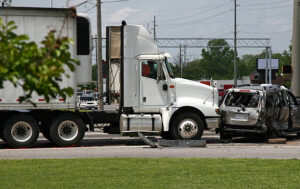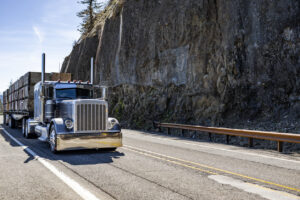What do champion weightlifters, concert pianists and safe professional truck drivers have in common? They understand the value of repetition. Whether it’s muscle-building exercises, muscle memory keyboard moves or safely piloting an 18-wheeler, repetition helps everyone ingrain the skills necessary to excel.
Drivers are usually inundated with defensive driving training from their first day in CDL school. The carriers they work for, whether as employed drivers or independent contractors, know continuous safety training improves safety results and impacts insurance rates.
Unfortunately, for some drivers, training sessions have become an exercise in compliance with company rules rather than valuable training opportunities. Too often, platitudes and generalizations are presented in place of valuable training. The same outdated videos are played again and again, often containing horrific scenes of blood and guts that are intended to shock viewers into being safe.
Quality safety training programs, such as the National Safety Council’s Defensive Driving Courses or the Smith System of Defensive Driving, charge for their programs and materials. Some carriers choose to save the costs by presenting outdated versions or poorly constructed programs of their own.
Whatever the program, it’s often the repetitive nature of the training that keeps safety top of mind for drivers. Whether the tenets of the program are called keys, principles, techniques or something else, similarities abound.
Most defensive driving programs begin with looking far ahead. The reason is simple. When a vehicle is moving, time and distance are related. Both are included in the way we measure speed, in miles per hour or feet per second. The farther ahead a hazard is identified, the more time the driver has to deal with it. The additional time can mean the difference between being able to stop or not, and may even allow for other measures, like a lane change.
A visual scan is another way to remain alert. By keeping a “head on a swivel” (moving both head and eyes all around the vehicle), the driver can identify some hazards before they happen. For example, a car that is overtaking a truck from behind might change lanes and brake in front of the truck it just passed. By noticing the aggressive driving behavior, the truck driver can be prepared.
Good drivers scan all mirrors and gauges, as well as everything that can be seen through the windshield and side windows. Be careful, however, of any guidance that specifies a time interval. For example, some programs may specify looking in each mirror once every 10-12 seconds. Don’t get bogged down in scanning for the sake of scanning. In heavy traffic, what’s directly in front can change rapidly in the few seconds it takes to complete a scan. Nighttime on a deserted highway is another example. If there are no headlights in the mirrors, there’s no need to check every 10 seconds. It might be better to do a side-to-side scan to detect animals entering from the side.
Some defensive driving programs teach drivers to avoid being “boxed in” so they have an escape route if something happens ahead. It’s not bad advice — but every driver’s first escape route must be the brake pedal. By controlling speed and following distance and ensuring that there’s always enough room to stop before colliding with another vehicle, drivers can avoid accidents. Never let the availability of an escape route distract from the task of making sure there’s room to stop ahead.
Visibility also a large part of defensive driving. With the exceptions of bright headlights and fog lights reflecting off a wet highway, it’s always a good idea to turn on lights to make your vehicle as visible as possible to other motorists. Every truck driver has seen, (or not seen) a dark colored vehicle with no headlights in their rear-view mirror. However, lights need to be in good working order and must be clean of buildup of snow, ice or dirt.
Modern LED powered lights give off very little heat compared to the incandescent bulbs of yesteryear. Whereas sealed beam headlights of the past were warm enough to melt snow buildup, modern lights can quickly be obscured. During inclement weather, they need to be checked and cleaned more often.
Visibility also encompasses the driver’s ability to see. Dirty or obstructed windshields and windows impair visibility and can prevent the driver from spotting a hazard. Mirrors can be obstructed by rain or snow; heated mirrors can dry the moisture but leave dirt and ice-clearing chemicals behind. Carry extra windshield washer solvent, and make sure it will protect when temperatures get below zero. Rags or a squeegee can quickly clean mirrors or side windows to help maintain perfect visibility.
Visibility includes eye contact, too. Vehicles that could pull into your direction of travel aren’t as likely to do so if their drivers are looking directly at you. There’s no guarantee that they’ll see your vehicle, but it their drivers are looking away they certainly can’t see you. Make sure they’re looking in your direction. Flash your lights and, if necessary, use your horn.
Driving defensively should never be something to learn and forget. It is a never-ending process. Drivers are training with road experience, so they have the best chance of predicting the actions of others and avoiding the aftermath.
Cliff Abbott is an experienced commercial vehicle driver and owner-operator who still holds a CDL in his home state of Alabama. In nearly 40 years in trucking, he’s been an instructor and trainer and has managed safety and recruiting operations for several carriers. Having never lost his love of the road, Cliff has written a book and hundreds of songs and has been writing for The Trucker for more than a decade.








